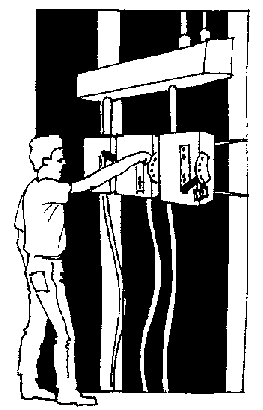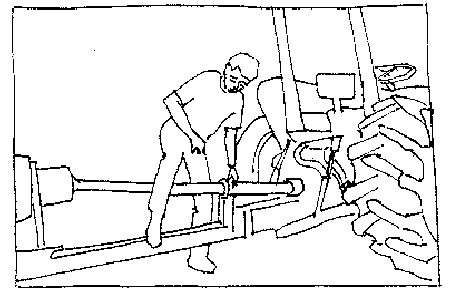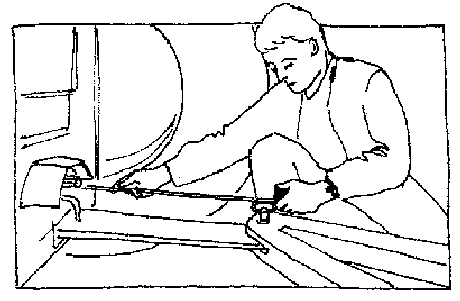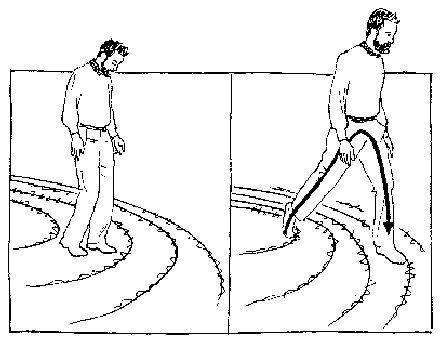Safe Grain and Silage Handling
1995
DHHS (NIOSH) Publication Number 95-109

Section 5: Processing
"Nothing's as good as holding on to safety."
—Euripides, c. 410 BC
Greek Playwright
Processing
On-farm processing activities, such as grain cleaning or grinding, are not as frequently mentioned in farm safety discussions as are other activities. Processing machines do, however, have many of the same hazards as machines that are discussed more often. Grinders and cleaners have augers and power take-offs (PTOs) that are entanglement and amputation hazards. The dust from processing machines can be a fire or even an explosion hazard. Electrically powered equipment has electrocution hazards. This section will discuss the most serious hazards associated with processing machinery and the simple things that you can do to protect yourself.
This section is the fifth part of a five-part handbook on grain- and silage-handling hazards. Each of the five sections of this handbook is meant to stand alone, so some hazards will be discussed in more than one section. If you have already read one of the other sections of this handbook, some of the material in this section may be a review for you.
Moving Components
Make it a practice to shut off the power before attempting to unclog or service any machine. For PTO-powered equipment, shut off the tractor and take the key with you. Shut off, lock, and tag electrically powered machines (Figure 5-1). Remember that some machinery, such as grinders, will have flywheels that will continue spinning for some time after the power has been shut off. Don't attempt any service activities until you are sure that all rotating parts have stopped. Allow rotating parts to stop on their own. Attempting to slow parts quickly with a wooden stick or metal bar can cause you to be pulled into the machine or struck by flying pieces.

Figure 5-1. Before servicing any electrically powered equipment, shut off, lock, and tag, the control box. Don't take the chance that the equipment could become energized while you are working on it.
Shields and Guarding
The shields and guarding on farm equipment are meant to prevent you from becoming entangled. Some of these guards may seem to get in the way when servicing or unclogging the machine. These guards cannot protect you, however, if they are not in place. You never know when you might slip or lose your balance and fall into or onto the machine, resulting in severe injuries, amputations, or death. Placing the machinery on dry, level ground and keeping your work area clean will also decrease your chance of slipping and becoming entangled. Consider placing gravel on frequently used areas to provide better footing. Clean up after the machinery has been shut off to prevent you or your tools from becoming entangled.
PTO Safety
Many entanglements are caused by contact with PTO shafts. You can reduce your chances of entanglement by not stepping across, reaching across, or reaching under a rotating shaft, even if it is shielded (Figure 5-2).

Figure 5-2. Don't take the chance of becoming entangled in a PTO shaft or driveline. Never step across or reach across or under a rotating shaft, even if it is shielded.
Safe practices will reduce the chance of entanglement, but not completely eliminate it. Shielding is designed to prevent entanglement if contact should occur. All driveline joints, as well as the driveline shaft, should be protected by shields that are in good condition. Rotating shields should not have cracks or sharp edges, since either of these could start wrapping loose clothing or hair onto the shaft. Shields that are meant to rotate separately from the shaft inside should rotate freely. Of course, checking to see if the shield rotates freely should be done only when the shaft is stopped.
The clothing worn while working around PTO shafts, and other equipment, can also help to prevent entanglement. Work clothing should be well-fitting and zippered or buttoned, not open. Frayed clothes, jackets and sweatshirts with drawstrings, and boots or shoes with long shoelaces should be avoided. A shoelace or loose string, thread, flap of cloth, or the corner of a jacket can become entangled very easily.
It is also important to use the correct hitching height and distance with PTO-powered implements. Check the owner's manual for the proper hitching position (Figure 5-3). Leave stationary implements hitched to the tractor so the hitching position does not change. An improper hitching height or distance can cause the telescoping section of the PTO shaft to separate or fail. When a PTO shaft separates or fails, the loose or broken ends can whip around violently and may cause severe injuries.

Figure 5-3. Keep PTO-powered equipment hitched to the tractor at all times. Be sure to use the hitching distance specified by the owner's manual. If the correct distance isn't used, or the equipment drifts apart, the shaft could fail or whip around and could cause severe injuries.
Grinding and Milling Hazards
Grain dust explosions are typically associated with grain elevators, but can occur wherever sufficient quantities of grain dust are mixed with air in an enclosed space. These conditions exist in some on-farm processing machinery, such as hammermills. If metal, stones, or other non-grain material enters this machinery, sparks could be created that could ignite the dust and cause an explosion. Stones or metal that enter processing machinery can also be thrown out or cause loose or broken machine pieces to be thrown out, resulting in severe injuries.
Several methods can be used to reduce the chance of non-grain material entering equipment. Screens will allow the grain to pass through, removing larger material. Magnets can be used to remove ferrous metals. Magnets are most efficient when the feed spouting is designed to slowly pass material over the magnets. Material captured by screen or magnetic systems should be removed regularly to maintain performance. Pneumatic systems use air to draw grain into the grinder or mill, leaving heavier non-grain material behind. Advances in technology have resulted in durable metal detectors that can shut down equipment before any metal has a chance to enter and cause damage or injury. The combination of two or more of these separation methods will decrease the chance of non-grain material entering the mill.
Electrical Safety
Electrocution hazards for processing machines come from two sources, mobile machines that could contact overhead power lines and electrically powered machines. When moving mobile processing machinery, plan your path in advance. Leave a minimum overhead clearance of 10 feet between a power line and the equipment.
If the equipment you are towing should contact a power line, try to drive away from the line to break electrical contact. Stay on the tractor or truck you are using, if possible. The soil immediately around equipment touching a power line will be energized. Soil near the vehicle will be at a higher voltage level than soil farther away. If you climb off the vehicle, you could connect two different voltage levels and become electrocuted. If you must leave the vehicle, you should jump away from the vehicle and wire, landing with both feet together while maintaining balance. After landing, shuffle away from the vehicle using very short steps. Too large a step could put each foot in a different voltage zone and could kill you (Figure 5-4).

Figure 5-4. If equipment contacts an overhead power line, the ground around the equipment will be energized. If you must leave the equipment, jump clear and land with your feet close together while maintaining balance. Shuffle away using very short steps (a). Using too large a step could put each foot in a different voltage zone and electrocute you (b).
To reduce your risk of an electrocution, consider permanently connecting electrical equipment with underground wiring. For 120-volt outlets, consider using ground fault circuit interrupters, commonly called GFCIs. These devices will shut off power to equipment before enough current has leaked from an electrical fault to kill you. If you are making wiring changes, make sure whoever does the wiring is familiar with correct agricultural wiring practices. The conditions in agricultural buildings are more severe than in many other locations. Improper wiring practices could increase your risk of electrocution or could cause a fire.
Fire Prevention
Accumulations of dust or plant residue caused by grain processing can create fire hazards. Fire hazards can be reduced by keeping drive belts tight and chains in good condition, by frequently removing dust and crop residue buildup, and by checking and lubricating bearings regularly.
- Page last reviewed: June 6, 2014
- Page last updated: June 6, 2014
- Content source:


 ShareCompartir
ShareCompartir